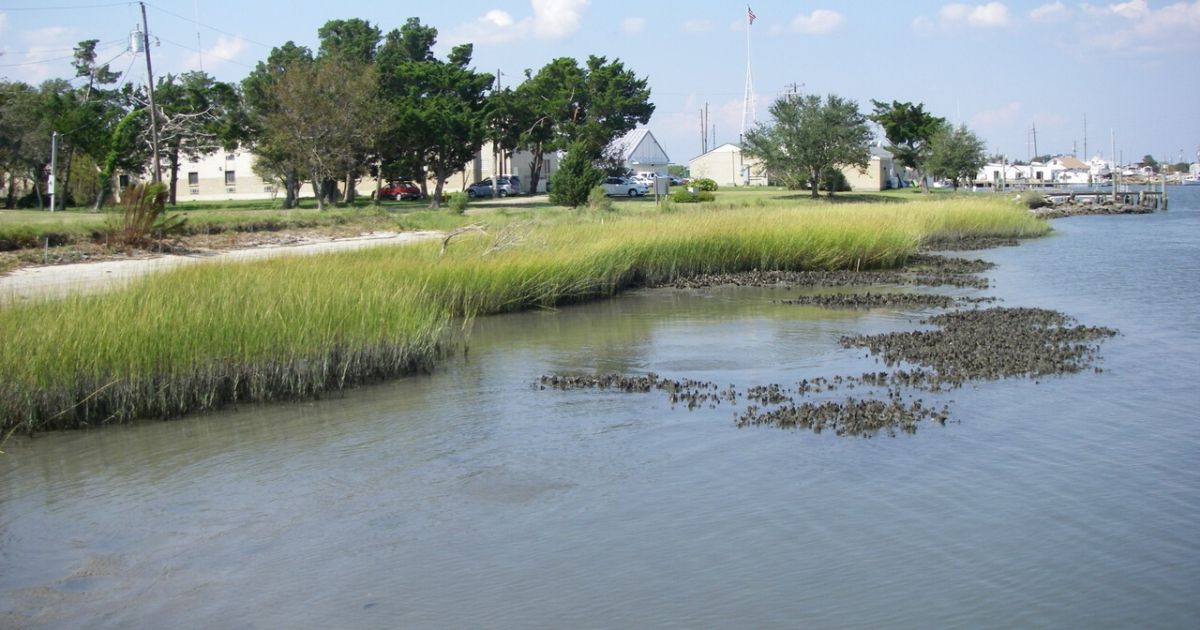As climate-driven stressors and rising sea levels threaten people and wildlife alike, states have a vital role in promoting pragmatic, nature-based solutions, according to a new report from the National Wildlife Federation and the Coastal States Organization.
Softening Our Shorelines: Policy and Practice for Living Shorelines Along the Gulf and Atlantic Coasts highlights opportunities to increase the appropriate use of living shorelines to promote resilience in coastal communities and support wildlife and ecosystem services.
“Communities along the Atlantic and Gulf coasts have experienced firsthand that investments in coastal wetlands, dunes and wildlife habitat provide incredible protection from climate-fueled hurricanes and extreme weather events. This report highlights not only the benefits of living shorelines — for people and wildlife alike — but provides a how-to guide for states to take action,” said Collin O’Mara, president and CEO of the National Wildlife Federation. “The science is clear, and now we urge our leaders at all levels to prioritize the restoration of living shorelines.”
Increased coastal erosion and sea level rise have pushed many landowners to seek more nature-based solutions to shoreline stabilization. However, due to challenges such as complicated or lengthy permitting processes and a lack of qualified contractors, the rate of installation for living shoreline projects is still relatively low compared to hard infrastructure protections like sea walls and bulkheads. This report takes a deep dive into the regulatory landscape on the ground, presenting a state-by-state catalog of the current permitting processes for living shorelines in Gulf and Atlantic coastal states to facilitate the transfer of best practices for natural solutions and promote their expansion.
“States play a pivotal role in enhancing the use of living shorelines and shoreline softening where it is the most effective and efficient option to protect coastal communities,” said Bradley Watson of the Coastal States Organization. “As states manage their coasts, proven living shoreline techniques are an important tool in the infrastructure toolbox to protect lives and property, enhance ecological productivity and achieve long-term costs savings.”
Among the recommendations in Softening Our Shorelines: Policy and Practice for Living Shorelines Along the Gulf and Atlantic Coasts:
- State-led Standards: States are in a strong position to take the lead to drive the development of design standards and/or guidance for living shoreline projects. Clear standards are important both for regulators to assist with efficient permit review and for contractor and engineering professionals designing projects.
- Parity in Permitting: States have found success in working within their environmental protection and land management obligations to ensure that hardened approaches do not have a systematic advantage over living shorelines in the permitting process.
- Guidance & Outreach: Education and training for landowners, communities, engineers and marine contractors is needed to strengthen the understanding of what a living shoreline is and where it may be appropriate, provide instructions for permitting requirements and processes and explain design criteria for project development.
- Incentive Programs: States can also leverage their resources, technical expertise and community partnerships to incentivize the voluntary development of living shoreline solutions as equally viable or preferable to hardened solutions on appropriate parcels.
- Investment and Monitoring: Increased federal investment in living shorelines implementation and project monitoring, including through grants, would enable more communities to explore such approaches and help grow our national understanding of living shorelines performance and efficacy. Living shorelines should be competitive for disaster mitigation dollars.
Visit the National Wildlife Federation Media Center here.



